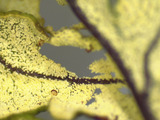
Golden back fern. Back of pinnae.Image credit: Fernando Agudelo-Silva
- Subject:
- Agriculture
- Biology
- Botany
- Forestry and Agriculture
- Material Type:
- Diagram/Illustration
- Author:
- Emily Fox
- Date Added:
- 08/22/2022

Golden back fern. Back of pinnae.Image credit: Fernando Agudelo-Silva
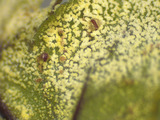
Golden back fern. Back of pinnae.Image credit: Fernando Agudelo-Silva
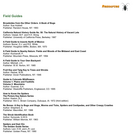
This reference includes individual titles of note along with the most popular field guide series. For each guide, the author, publisher, and publication date are given. The diverse list has 17 individual titles, which cover everything from wildflowers in the Colorado mountains and insects north of Mexico to the natural history of vacant lots. There are detailed descriptions of four of the most popular field guide series: Audubon Society Guides, Golden Guides, Peterson Guides, and Stokes Nature Guide Series.
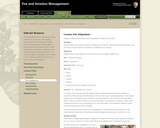
Using this lesson plan students will be more aware of how plants and animals adapt to wildland fire. They will: Discuss the adaptive strategies of plants and animals to survive fire. Observe plants and animals in your local area. Design a plant or animal that is adapted for fire survival.

Here is a forestry lab activity that is geared for early childhood, preschool, and early elementary ages. It involves a table setup, outdoor activities, and YouTube videos for the instructor to reference.
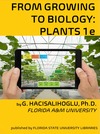
Ready to find out how plants are grown and function? Take a fantastic voyage through plants. From Growing to Biology: Plants 1e brings the latest information for understanding of traditional and modern plant growing, form, and production. Topics covered in 30 chapters include concise and up-to-date ‘big picture’ infographics, student learning outcomes (SLOs), key vocabulary, assessment, as well as identification of 120 species, and more. Moreover, author Dr. G. Hacisalihoglu emphasizes on leaning concepts, binding those concepts together with visuals approach to make learning faster and more memorable.
From Growing to Biology: Plants 1e is packed full of horticultural information that is ideal for both academia and industry growers. It is basic enough that if you are just getting started learning plants, you will be able to catch up. Always remember that practice makes permanent and keep going to take your learning plant bio to new levels.

This activity is a classroom activity to invistigate seeds and plants.

Leaders in the field of biological diversity present an overview of emergent issues in biodiversity, from the surrounding flora and fauna to the genes deep within us. (117 minutes)

This glossary in Telugu is extensively helpful for those who are studying Botany . It provides them with simple and clear definitions for key terms and concepts in Botany. By contributing clarity and understanding in Telugu, a glossary for Botany can be a great source of help, especially for those who have done much of their education in Telugu and for those who are from rural areas and have been dispossessed of their education for a period of time and are trying to resume their studies. I hope my efforts will serve your purpose.
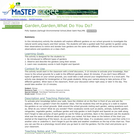
This is a field activity where students explore different types of gardens comparing how they are the same and different.
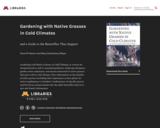
and a Guide to the Butterflies They Support
Short Description:
Gardening with Native Grasses in Cold Climates, is written for inexperienced as well as seasoned gardeners, landscape designers, garden center employees, and anyone interested in native grasses that grow well in cold climates. New information on the benefits of native grasses including their importance as host plants for native Lepidoptera is included. Combinations of specific grasses used by larvae and perennials that the adult butterflies feed on is new and timely information.
Word Count: 10242
ISBN: 978-1-946135-65-0
(Note: This resource's metadata has been created automatically by reformatting and/or combining the information that the author initially provided as part of a bulk import process.)

Description: In this activity students become acquainted with the anatomy and biology of seeds. They will use lenses and scales and make drawings to scale. Students will measure and calculate magnifications and they will begin to understand relationships among these. They will organize and summarize their data and, as they do so, they will be developing the understanding and skills needed to undertake more detailed investigations on the biology and reproduction of Fast Plants. Learning Objectives This activity is designed to strengthen students' observational and quantitative skills. In participating in this activity students will: - learn to use magnifying lenses, microscopes and dissecting tools for detailed observation" - measure scales with rulers" - draw to scale, with accuracy and precision to understand scale and magnification" - learn features of the external anatomy of seeds that are associated with certain features of the internal anatomy of seeds" and - estimate the amount of water required to be taken up by seeds in order to initiate germination.
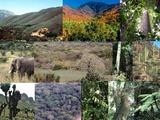
This module focuses on the description of different vetation types that may be of use as part of an introductory physical geography course (biogeography), or for a class focused on the study of plants and vegetation. All images were collected from travels to learn about vegetation over the past 40 years and I openly make them available through the OER site. The resources attached to the module include:I. Description of terms used to describe and distinguish among global vegetation types (biomes)- descriptive notes and imagesII. Tropical Vegetation Types- descriptive notes and powerpoint slide showIIIl Subtropical_Temperate_Arctic Vegetation Types- descriptive notes; powerpoint slide show; supportive lists for desert and montane species.

This illustration depicts the first two stages of aerobic respiration: glycolysis and the citric acid cycle.

This illustration depicts the 10 stages of glycolysis.

In this biology lab extension, student will have already collected leaves from the playground and surrounding school areas and sorted them into categories according to leaf properties. Students will use the leave classifications/ sorts to graph the properties of the leaves.

This online article, from Biodiversity Counts, is a guide to finding local specialists who are knowledgeable about plants and arthropods. It includes: an overview of how local specialists can be of help; a link to the Directory of Local Specialists, a list of specialists who have agreed to work with participating schools; a list of additional organizations, with links to Web sites, that are good sources for local specialists; tips on how to find local specialists from Linda Beyt, a middle school teacher in Louisiana and a Biodiversity Counts mentor; and tips for enlisting volunteers by Karen Spaulding, a middle school teacher in Massachusetts and a Biodiversity Counts mentor.

BCC Bioscience Image Library is a media file repository of images and video clips made available to educators and students in the biological sciences. The resources are created by faculty, staff and students of Berkshire Community College and are licensed under Creative Commons 0. This means all content is free, with no restrictions on how the material may be used, reused, adapted or modified for any purposes, without restriction under copyright or database law.
This project was partially funded by a $20,000,000 grant awarded by the U.S. Department of Labor’s Employment and Training Administration, Grant # TC-26450-14-60-A-25. The product was created by the grantee and does not necessarily reflect the official position of the U.S. Department of Labor. The U.S. Department of Labor makes no guarantees, warranties, or assurances of any kind, express or implied, with respect to such information, including any information on linked sites and including, but not limited to, accuracy of the information or its completeness, timeliness, usefulness, adequacy, continued availability, or ownership.
If you have any questions contact professor Faye Reynolds at: freynold@berkshirecc.edu

In this biodiversity activity, students learn how to construct their own dichotomous keys. They use either specimens they've collected or ones you bring into class, such as shells, fruit, or leaves. The one-page printable PDF includes guidelines about what students should look for and include when creating their dichotomous keys.

This treasure-hunt activity is designed to be completed during a trip to the museum's Hall of Biodiversity. The printable one-page PDF challenges students to find 31 animals and plants in the Hall's diorama. Photographs of 21 of these specimens are included.